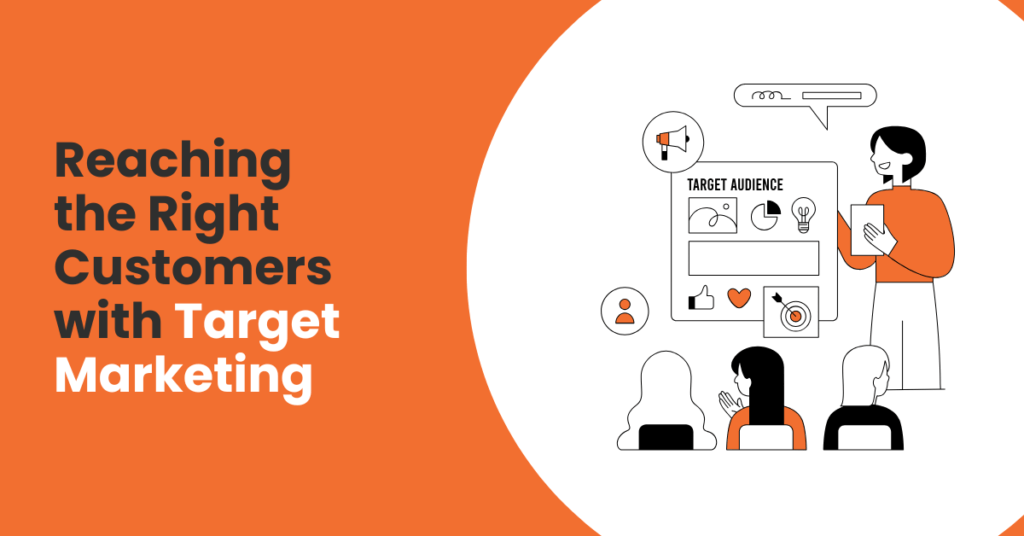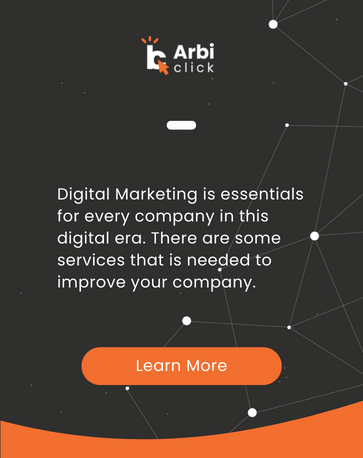Reaching the Right Customers with Target Marketing

When it comes to marketing, casting a wide net doesn’t always bring the best catch. You might think reaching more people means more sales, but here’s the reality: trying to appeal to everyone usually means you end up resonating with no one. That’s the fundamental problem with generic marketing approaches.
Picture this scenario: You’ve poured thousands of dollars into a marketing campaign. The ads are running everywhere—social media, Google, display networks.
You’re getting impressions, sure. Maybe even some clicks. But when you look at the actual conversions and sales? Disappointment. The ROI just isn’t there. You’re left wondering what went wrong.
This is the exact situation countless businesses find themselves in, and it usually comes down to one critical mistake: they’re marketing to everyone, which effectively means they’re marketing to no one in particular.
When your message is designed to appeal to the broadest possible audience, it becomes so diluted and generic that it fails to truly connect with anyone.
It’s like trying to have a conversation in a crowded room by yelling random facts, sure, everyone can hear you, but is anyone actually listening?
Smart brands have figured this out. They’ve learned that success doesn’t come from reaching the most people; it comes from reaching the right people.
They focus on target marketing—the art and science of identifying the specific groups of people most likely to become paying customers and creating strategies specifically designed to reach them. It’s not about being exclusive or turning people away; it’s about being strategic and effective with your resources.
Think about the brands you personally connect with. The ones whose emails you actually open, whose ads make you stop scrolling, whose products you recommend to friends.
Chances are, these brands understand you. They speak your language. They address problems you actually have. They show up in places you already spend time. That’s not luck or coincidence—that’s target marketing done right.
Also read: Unleashing the Power of Click Marketing As PPC, CPC, and CTR

The difference between businesses that struggle with marketing and those that thrive often comes down to this one principle. The struggling businesses keep throwing money at broad campaigns, hoping something sticks.
The thriving ones know exactly who they’re talking to, what those people care about, and how to reach them effectively. They might spend less on marketing overall, but they get far better results because every dollar is working strategically.
If you want your marketing campaigns to actually work this year and beyond, getting a solid grasp on target marketing isn’t optional anymore. It’s the foundation of everything that follows.
Whether you’re a small business just starting out, a growing company looking to scale, or an established brand trying to stay relevant, understanding how to identify and reach your ideal audience is what separates success from struggle in today’s competitive marketplace.
Also read: The Small Business Guide to Lead Generation That Works
Smart Target Marketing
Let’s break this down in simple terms. Target marketing is the practice of taking a broad, general audience and breaking it down into smaller, more specific groups (we call these target markets), and smart marketing.
Once you’ve identified these groups, you design marketing messages that actually speak to them, their needs, their problems, their desires.
Think of it this way: instead of standing in a crowded square shouting your message and hoping someone listens, target marketing helps you walk up to the right person, tap them on the shoulder, and have a real conversation.
You’re reaching the right people at the right time with the right message. The result? Better engagement, more conversions, and less wasted budget.
Example:
Take a luxury skincare brand. They’re not going to use the same marketing approach for teenagers struggling with acne as they would for professionals in their 40s who are concerned about fine lines and aging.
The concerns are different, the language is different, the price sensitivity is different, and even the platforms where these groups hang out are different. A 16-year-old might respond to a TikTok video showing quick fixes for breakouts, while a 45-year-old executive might be more interested in a detailed blog post about clinically-proven retinol serums. Same brand, completely different approach.

Why Target Marketing Plays Important Role
You might be wondering: why go through all this effort? Why not just create one great ad and show it to everyone? Here’s why target marketing makes a massive difference to your bottom line.
Efficiency
Let’s talk money. When you target specific audiences, you stop throwing your marketing budget at people who have zero interest in what you’re selling. A vegan restaurant advertising to steak lovers? That’s wasted money. A B2B software company running ads on a platform mostly used by teenagers? Same problem.
Target marketing means every dollar you spend is working harder because it’s reaching people who actually care. You’ll spend less overall while getting better results.
Relevance
Nobody likes feeling like they’re just another number in a database. When your marketing speaks directly to someone’s specific situation, it doesn’t feel like marketing, it feels like you understand them.
This personal touch creates a genuine connection. People are far more likely to pay attention when they feel like you’re talking to them specifically, not just broadcasting to the masses.
Higher Conversions
Here’s where it gets interesting. When you speak directly to someone’s actual needs and pain points, they’re exponentially more likely to take action.
If someone is struggling with insomnia and they see an ad that says “Can’t sleep? We’ve got a solution,” they’re going to click. That’s not coincidence—that’s strategic targeting at work. Generic messages get generic results. Specific messages drive specific actions.
Competitive Advantage
In any market, you’re competing against dozens or hundreds of other brands. The ones that truly understand their target market, what makes them tick, what keeps them up at night, what they value, those are the brands that stand out.
While your competitors are spraying generic messages everywhere, you’re building real relationships with the customers who matter most to your business.
Also read: 5 Metrics to Track for Measuring Google Ads Success

Knowing the theory is one thing. Actually implementing a target marketing strategy requires a methodical approach. Here’s how to do it step by step.
Step 1: Define Your Ideal Customer
Start by getting crystal clear on who you’re actually trying to reach. This isn’t guesswork—it’s based on real data. Dig into:
– Customer surveys and feedback forms
– Website analytics (who’s visiting and converting)
– Social media insights (who’s engaging with your content)
– Sales data (who’s actually buying)
– Customer service interactions (what questions and concerns come up)
From all this information, build detailed buyer personas. Give them names, backgrounds, and stories.
Example, Sarah, 32, marketing manager, lives in Austin, struggles with work-life balance, loves yoga, shops on Instagram, values sustainability, makes $75K/year. The more specific, the better. These personas become your north star for all marketing decisions.
Step 2: Research Your Market
Don’t operate in a vacuum. You need to understand the bigger picture. Spend time researching:
– What your competitors are doing (and where they’re falling short)
– Current industry trends and shifts
– Where your target audience spends their time online and offline
– What content they’re consuming and sharing
– What problems they’re actively trying to solve
– What language and terms they use when talking about these problems
Use tools like Google Trends, social listening platforms, industry reports, and good old-fashioned observation. Join the Facebook groups your customers are in. Read the Reddit threads. Follow the influencers they follow. Immerse yourself in their world.
Step 3: Choose Your Market Segments
Here’s the hard truth: you can’t be everything to everyone, especially if you’re a small or medium-sized business. Look at all the potential segments you’ve identified and make strategic decisions about which ones to prioritize. Consider:
– Which segments are most profitable?
– Which align best with your brand values and capabilities?
– Which have the least competition?
– Which are growing vs. shrinking?
– Which can you realistically serve well?
Sometimes the most lucrative segment isn’t the best choice if you can’t serve them properly. A luxury brand trying to suddenly appeal to budget shoppers will confuse both audiences. Pick your battles wisely.
Also read: 4 Impactful Tips to Kickstart your Digital Marketing Career
Steps to Build a Target Marketing Strategy

Step 4: Craft Personalized Messaging
Now comes the creative part. With your target segments clearly defined, create messages that speak directly to them. This means:
– Using language they actually use (not corporate jargon)
– Addressing their specific pain points, not generic problems
– Highlighting benefits that matter to them specifically
– Showing real understanding of their situation
– Demonstrating clearly how your product or service solves their problem
If you’re targeting busy parents, talk about convenience and time-saving. If you’re targeting ambitious professionals, focus on efficiency and status. If you’re targeting retirees, emphasize ease of use and reliability. Same product, different angles.
Step 5: Pick the Right Channels
Choosing marketing channel is very important. A perfect message delivered to the wrong place is still a failed campaign. You need to show up where your audience actually is. Different segments hang out in different places:
– Gen Z? You need to be on TikTok and Instagram
– B2B professionals? LinkedIn is your friend
– DIY enthusiasts? Pinterest and YouTube tutorials
– Local community? Facebook groups and local events
– Tech-savvy early adopters? Twitter (X) and Reddit
Don’t spread yourself too thin. It’s better to dominate two platforms where your audience lives than to have a weak presence on ten platforms.
Step 6: Measure & Refine
Target marketing isn’t “set it and forget it.” The most successful marketers are constantly testing, measuring, and adjusting. Track everything:
– Click-through rates (are people interested?)
– Conversion rates (are they taking action?)
– Engagement metrics (are they interacting?)
– Cost per acquisition (is it profitable?)
– Customer lifetime value (are you attracting quality customers?)
Run A/B tests. Try different messages, images, and calls-to-action. What works for one segment might flop with another. Let the data guide you, but also pay attention to qualitative feedback. Sometimes a campaign that looks good on paper doesn’t resonate emotionally.
Also read: How to Find and Create Trending Content

Target Marketing Popular Trends
The marketing landscape keeps evolving, and staying current means understanding where things are headed. Here’s what’s shaping target marketing right now.
AI-Powered Segmentation
Artificial intelligence tools are getting scary good at predicting customer behavior. These platforms can analyze thousands of data points to identify patterns humans would miss.
They can predict which customers are likely to churn, who’s ready to upgrade, and which prospects are most likely to convert. Companies using AI for segmentation are seeing significant improvements in campaign performance because they’re working with more accurate, more nuanced audience profiles.
Hyper-Personalization
Generic is dead. Today’s consumers expect experiences tailored specifically to them.
We’re talking about dynamic website content that changes based on who’s visiting, email campaigns that reference specific browsing behavior, product recommendations based on past purchases, and ads that feel like they were created just for you. Brands like Netflix, Spotify, and Amazon have set the standard. Everyone else is racing to catch up.
Niche Communities
Forget trying to build a massive following. Smart brands are targeting small but highly engaged communities where their ideal customers already gather.
This might be specialized Discord servers, private Facebook groups, subreddit communities, or even smaller platforms built around specific interests.
A gaming peripheral brand might focus on Discord servers for specific games. A parenting brand might focus on private Facebook groups for moms in specific cities. These tight-knit communities offer better engagement than broad social media followings.
Values-Driven Marketing
This isn’t just a trend—it’s a fundamental shift in how people choose brands. Consumers, especially younger ones, want brands that reflect their ethics and values. They care about:
– Sustainability and environmental impact
– Diversity, equity, and inclusion
– Transparency in business practices
– Fair labor and ethical sourcing
– Social responsibility and giving back
Companies that authentically embrace these values (not just performative marketing) are winning loyalty from target audiences who share those values. Patagonia’s environmental activism isn’t just marketing—it’s who they are, and it resonates deeply with their eco-conscious target market.
Also read: How Social Media Management Can Help to Boost Your Company

Focus Brings Results with Target Marketing
Let’s wrap this up with the core principle: target marketing isn’t about excluding people or being elitist. It’s about focus. It’s about recognizing that your resources—time, money, energy—are limited, and using them strategically to connect with the people who matter most to your business.
By taking the time to truly identify your audience, understand what makes them tick, tailor your message to their specific needs, and show up where they already spend their time, you’re not just attracting more customers.
You’re attracting the right customers—the ones who will stick around, buy repeatedly, and tell their friends about you.
In today’s crowded digital marketplace, where everyone is shouting for attention, the brands that succeed are the ones that stop shouting and start having real conversations.
They speak directly to specific people with authenticity, clarity, and genuine understanding. They don’t try to be everything to everyone. They know exactly who they serve, and they serve them exceptionally well.
That’s the power of target marketing. That’s how you cut through the noise, build meaningful connections, and grow a sustainable business that lasts.
Also read: Brand Awareness, First Step Toward Customer Relationships

